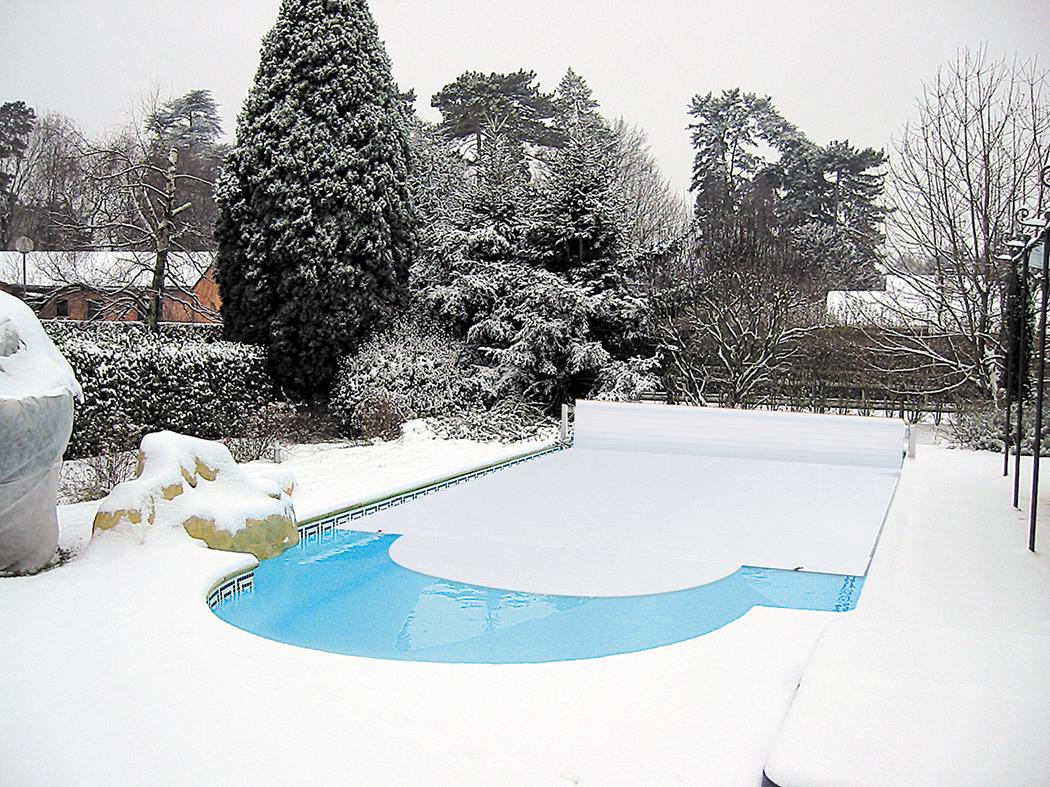Prepare the winterization of your pool

Did you know? You must take care of your pool even in winter. This is why you should winterize your pool to keep it in a perfect state of repair.
The time to winterize is when the temperature of your pool water drops. When the water remains stable below 59°F, you know it's time to put away the water polo nets, remove your robot and lower the water level. But what type of winterization is there?
Active winterization and its particularities
Active winterization lets you leave your pool's filtration system running for a few hours each day, except in the event of freezing temperatures, when the filtration system needs to run continuously. Of course, you have to help the system with regular maintenance of the pool bottom and the water line and a full maintenance service before winterization (bottom, walls, filters, skimmers...).
If necessary, apply a shock treatment using pool winterization products, but leave the filtration system running for at least 24 hours. The water should then be balanced at pH 7.2 to 7.4, TAC at 150 to 200 PPM and TH at 150 to 250 PPM.
Then you have to turn off all the equipment in your pool, whether it is a pH regulator or automatic treatment. You must also run your filtration system in the morning (when the risk of freezing is highest). You will no longer need to treat your pool during the winter, but simply monitor the pH, TAC and TH levels to make sure they do not go out of range.
Then, simply put a winter cover on your pool to prevent impurities from entering the water.
Does passive winterization require a complete stoppage?
Passive winterization does not need any maintenance. Simply stop the pool completely, whether it is the filtration, maintenance or cleaning system. When the water reaches 12°C, you know it's time to put your pool on standby.
But of course you'll have to do a full clean! You will have to start by balancing your water pH (7.2-7.4 pH), TAC (150-200 PPM) and TH (150-250 PPM). The water level has been lowered and dirt must not be allowed to get into the liner. Even the bottom should be as clean as possible, a good start-up for next season depends onthe quality of the winterization. The water has dropped about 10 cm, leaving the nozzles out of the water to avoid freezing, so you might as well take the opportunity to do a little cleaning, including your filter.
To protect your pipes, don't forget to bleed your skimmers and your brush socket (check the treatment mode according to its connection mode); bottom suction has no risk and cannot be bled. Then stop the filtration of the pool, drain it, bleed all the equipment and use your winterization accessories (floats, plugs...).
All that's left to do is to add the winterization product to your pool and cover it with a winter cover.
